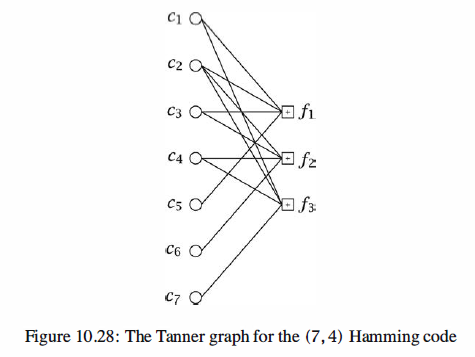Low-Density Parity-Check Codes
Low-density parity-check codes (LDPC) are linear block codes that are characterized
by a sparse parity-check matrix. These codes were originally introduced in Gallager
(1960, 1963) but were not widely studied for the next 20 years. These codes have
been the topic of active research in the coding community motivated by their excellent
performance, which is realized by using an iterative decoding schemes known as the
sum-product algorithm. In fact, it has been shown that these codes are competitors to
turbo codes in terms of performance and, if well designed, have better performance
than turbo codes. Their excellent performance has resulted in their adoption in several
communication and broadcasting standards.
Low-density parity-check codes are linear block codes with very large codeword
length n usually in the thousands. The parity-check matrix H for these codes is a large
matrix with very few l's in it. The term low density refers to the low density of l's in
the parity-check matrix of these codes.







Note
Obviously a Tanner graph with cycles has a girth that is least equal to 4.
If the girth of the LDPC code is low, the information corresponding to a bit loops back to itself very
soon, hence providing a little amount of extrinsic information and resulting in poor
performance. Design techniques for LDPC codes with large girth are topics of active research.
Reference,
1. <<Contemporary Communication System using MATLAB>> - John G. Proakis